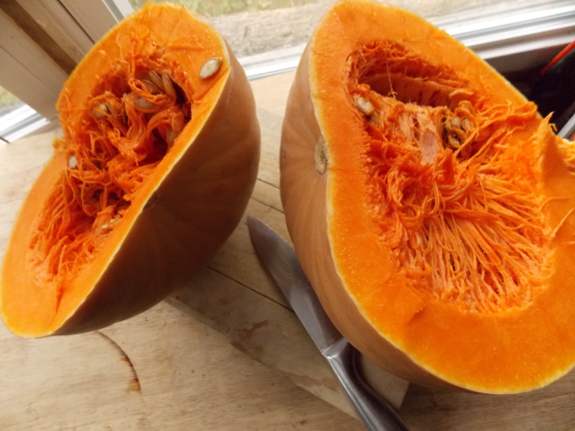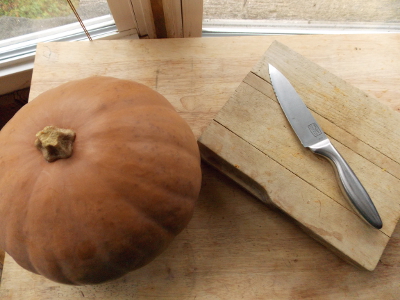
Cutting board safety

As several readers pointed out, I chewed Mark out incorrectly about using a wooden cutting board for meat. It turns out that wooden cutting boards are probably safer,
in actuality, since the bacteria tend to sink down into the wood, where
they slowly die off. In contrast, plastic cutting boards keep any
bacteria closer to the surface, and once the plastic boards have been
scarred by cutting action, those bacteria can move off the board and
back onto food relatively easily.
 On
the other hand, it's generally considered good practice to have two
cutting boards in your kitchen, one for meat and one for everything
else. Since meat is going to be cooked before eating, any bacteria
present will be killed by the high heat, but if you cut apples on a
cutting board that has been used for meat then eat the apples fresh,
you're at risk of getting food poisoning. In the past, I've just
cut up meat on a plate (annoying, but I don't do it often), but since
we'll now have a wooden and a plastic cutting board, I'll keep using the
wooden one for fruits and vegetable. We'll be extra-careful to
disinfect the plastic board after cutting up meat, which can be done by
washing the board and then soaking it in bleach water, exactly the
method Mark naturally gravitated toward.
On
the other hand, it's generally considered good practice to have two
cutting boards in your kitchen, one for meat and one for everything
else. Since meat is going to be cooked before eating, any bacteria
present will be killed by the high heat, but if you cut apples on a
cutting board that has been used for meat then eat the apples fresh,
you're at risk of getting food poisoning. In the past, I've just
cut up meat on a plate (annoying, but I don't do it often), but since
we'll now have a wooden and a plastic cutting board, I'll keep using the
wooden one for fruits and vegetable. We'll be extra-careful to
disinfect the plastic board after cutting up meat, which can be done by
washing the board and then soaking it in bleach water, exactly the
method Mark naturally gravitated toward.
While doing all this
research, though, I did learn one maintenance technique I need to add to
my arsenal --- oiling our wooden cutting board. Now I just need
to hunt down some food-grade mineral oil and give my grandmother's board
a new lease on life.
Want more in-depth information? Browse through our books.
Or explore more posts by date or by subject.
About us: Anna Hess and Mark Hamilton spent over a decade living self-sufficiently in the mountains of Virginia before moving north to start over from scratch in the foothills of Ohio. They've experimented with permaculture, no-till gardening, trailersteading, home-based microbusinesses and much more, writing about their adventures in both blogs and books.
Want to be notified when new comments are posted on this page? Click on the RSS button after you add a comment to subscribe to the comment feed, or simply check the box beside "email replies to me" while writing your comment.

Hi Anna,
Be better to cut meat on wood. Maybe one reserved for that job?
Happy Thanksgiving to you and Mark!
John